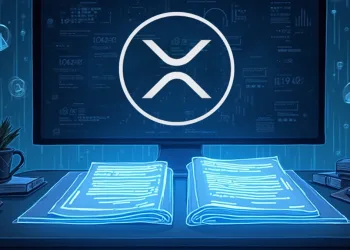- AMINA Bank becomes first traditional bank to support Ripple’s RLUSD stablecoin.
- Ripple seeks U.S. banking charter and Fed access to boost RLUSD trust and scale.
- RLUSD adoption surges as institutions favor regulated, fiat-backed stablecoins.
In a notable development for digital finance, Swiss-based AMINA Bank has become the world’s first traditional bank to support Ripple’s stablecoin, RLUSD. As regulatory clarity sharpens and institutional demand accelerates, AMINA is taking a bold step into the stablecoin ecosystem.
The Zug-headquartered bank, regulated by Switzerland’s FINMA, will offer trading and custody services for RLUSD. This marks a major shift toward mainstream adoption of blockchain-based financial instruments by licensed banking institutions.
Strategic Expansion Amid Rapid Growth
AMINA Bank’s support for RLUSD reflects a calculated strategy rooted in its strong financial momentum. The bank recently reported a 69% increase in revenue, making it Switzerland’s fastest-growing crypto financial institution.
Furthermore, its assets under management have surged by 136%, now totaling $4.2 billion. This remarkable growth is largely driven by institutional investors seeking regulatory-compliant crypto exposure.
In addition to FINMA approval, AMINA also holds regulatory licenses from the Abu Dhabi Global Market and Hong Kong’s Securities and Futures Commission. These licenses position the bank to serve global clients with robust compliance safeguards. RLUSD, backed by U.S. dollar reserves, government bonds, and liquid assets, fits neatly into AMINA’s institutional-first approach.
Ripple’s Bold Bid for Banking Access
Ripple launched RLUSD in December 2024, aiming to combine blockchain speed with the reliability of fiat reserves. The stablecoin has rapidly gained traction, with over $10 billion in transaction volume and listings on platforms like Kraken, Gemini, and Bitget. Its supply on Ethereum has quadrupled since January, underscoring growing confidence among institutional players.
Ripple’s ambitions stretch even further. CEO Brad Garlinghouse confirmed that the company has applied for a national banking charter from the U.S. Office of the Comptroller of the Currency (OCC).
Additionally, Ripple has submitted an application for a Master Account with the Federal Reserve. If granted, this access would allow Ripple to hold RLUSD reserves directly with the Fed, offering a new standard in stablecoin trust and transparency.
Institutional Outlook and Market Impact
The RLUSD stablecoin now commands a market cap nearing $470 million, ranking it as the 164th-largest crypto asset. Its design focuses on security, regulatory alignment, and institutional usability qualities increasingly in demand as digital assets mature. Ripple’s bid for federal oversight is set to reinforce its credibility and position the company as a leader in compliant digital finance.














